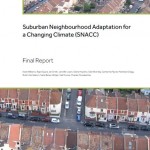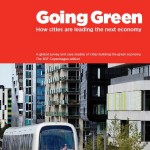Site search:
-
What’s new?
Energy for London Tags
Brent Buildings Camden Carbon Emissions CHP Cities Climate Adaptation Community Heating Community Initiatives Croydon Data DECC Decentralised Energy Distribution ECO Energy Costs Energy Efficiency Enfield FIT Fuel Poverty Funding Green Deal Hackney Haringey Housing Islington Lambeth Library Local Authorities Mayor Newham Ofgem Olympics Photovoltaics Planning RE:FIT RE:NEW Renewable Energy Retrofit Southwark Tower Hamlets Transport Waltham Forest Waste WestminsterEnergy Archives:
- February 2021 (1)
- January 2021 (15)
- December 2020 (15)
- November 2020 (9)
- October 2020 (3)
- August 2020 (5)
- July 2020 (3)
- June 2020 (4)
- April 2020 (10)
- March 2020 (5)
- February 2020 (2)
- January 2020 (3)
- October 2019 (1)
- September 2019 (4)
- August 2019 (2)
- July 2019 (1)
- August 2018 (1)
- November 2016 (8)
- October 2016 (8)
- September 2016 (2)
- August 2016 (8)
- July 2016 (14)
- April 2016 (12)
- March 2016 (16)
- February 2016 (8)
- January 2016 (4)
- December 2015 (1)
- November 2015 (1)
- October 2015 (16)
- September 2015 (3)
- June 2015 (1)
- May 2015 (1)
- April 2015 (1)
- March 2015 (1)
- February 2015 (1)
- January 2015 (1)
- December 2014 (18)
- November 2014 (4)
- August 2014 (8)
- July 2014 (7)
- June 2014 (25)
- May 2014 (8)
- April 2014 (4)
- March 2014 (12)
- February 2014 (7)
- January 2014 (13)
- December 2013 (11)
- November 2013 (15)
- October 2013 (15)
- September 2013 (18)
- August 2013 (5)
- July 2013 (20)
- June 2013 (33)
- May 2013 (8)
- April 2013 (16)
- March 2013 (25)
- February 2013 (14)
- January 2013 (20)
- December 2012 (23)
- November 2012 (23)
- October 2012 (25)
- September 2012 (14)
- July 2012 (12)
- June 2012 (43)
- May 2012 (20)
- April 2012 (8)
- March 2012 (40)
- February 2012 (39)
- January 2012 (40)
- December 2011 (22)
- November 2011 (40)
- October 2011 (33)
- September 2011 (48)
- August 2011 (40)
- July 2011 (58)
- June 2011 (41)
- May 2011 (80)
- April 2011 (38)
- March 2011 (33)
- February 2011 (25)
- January 2011 (24)
- December 2010 (3)
- November 2010 (7)
- October 2010 (6)
- September 2010 (7)
- August 2010 (1)
- July 2010 (2)
- June 2010 (4)
- May 2010 (1)
- March 2010 (3)
- February 2010 (3)
- December 2009 (5)
- November 2009 (2)
- October 2009 (3)
- July 2009 (3)
- June 2009 (1)
- April 2009 (1)
- March 2009 (1)
- February 2009 (1)
- January 2009 (1)
- December 2008 (2)
- October 2008 (1)
- September 2008 (1)
- July 2008 (1)
- March 2008 (2)
- January 2008 (2)
- October 2007 (1)
- September 2007 (3)
- July 2007 (1)
- March 2007 (1)
- February 2007 (3)
- November 2006 (3)
- August 2006 (1)
- February 2006 (1)
- May 2005 (1)
- February 2004 (1)
Library
FIT: Draft Guidance for Community Energy and School Installations
December 2012: Ofgem draft guidance document, open for consultation. It provides specific guidance for solar PV community energy and school installations on how to benefit from provisions available for the FIT scheme.
Further information on community energy and school installations can be found in the following DECC FIT FAQ document and the latest FIT rates here.
FAQs on ECO Brokerage
December 2012: Further to the ECO Brokerage consultation document issued earlier this week, DECC have now issued an ECO Brokerage FAQ briefing.
Survey of commercial property investors’ views on sustainability
December 2012: Interesting report from independent commercial property adviser GVA who have issued their latest annual survey of commercial property investors’ views on sustainability. Points to note from the report include:
- It is only five years to go before the EPC minimum energy performance standards kick-in (for both domestic and non-domestic properties). In accordance with The Energy Act 2011, by April 2018, it will become illegal to let residential or commercial properties that do not meet a minimum energy performance standard. The government have announced their intention to use an EPC rating of E as the minimum standard. This could have very significant implications for landlords and property investors alike with currently a fifth of commercial properties below this standard.
- This latest survey indicates an increased emphasis on the importance of sustainability in property, despite the significant economic challenges that remain. However it will still do little to convince industry critics that the current trajectory of improving property stock will meet Government deadlines.
- The survey shows a trend between 2007 and 2012 of investors placing increasing importance on sustainability factors within their acquisition and disposal decision making.
- The report also stated that only a third of survey respondents believe the current poor market conditions have caused a lessening of importance towards sustainability issues by investors.
‘ New Energy Efficiency Scheme could add over £94 to energy bills’
27 November 2012: Energy sector trade body Energy UK has published research undertaken by NERA on what they believe are errors in the Government’s assumptions of the cost per household of the new Energy Company Obligation (ECO). The report’s findings suggest that:
- DECC estimated that the ECO would cost energy suppliers £1,300 million per year (about £53 per customer per annum). ..Our analysis suggests that correcting unreliable assumptions in DECC’s modelling would raise the estimated cost of the programme to around £1,700 million per annum (ca. £69 per customer per annum).
- In addition, there may be a problem with DECC’s reliance on a “stated preference” study, a form of customer research which is known to suffer from a bias in the case of environmental programmes (i.e. the “warm glow” of appearing to favour good works leads people to state that they will pay more for environmental programmes than they will pay in reality). DECC has not published the study, so it is difficult to quantify precisely the impact of any bias inherent in the answers. A simple and transparent sensitivity is to assume that respondents might have ignored the “hassle costs” that an ECO project would impose on them. Adjusting DECC’s model of customer preferences by a comparable amount raises the cost of the programme further still, to around £2,350 million per annum (ca. £94 per customer perannum), but the final cost could be much higher.
Download the report here – The Costs of the Energy Company Obligation.
The impact on the fuel poor of the reduction in fuel poverty budgets in England
27 November 2012: Association of Conservation of Energy and Energy Bill Revolution campaign report setting out how the Government has significantly reduced the financial support it gives the fuel poor. The key findings of the research are as follows:
- Firstly, we find that the total budget likely to be reaching the fuel poor in England falls from £1.191 billion in 2009 to £879 million in 2013. This is a reduction of 26%.
- Secondly, we find that of the total budget reaching the fuel poor, the energy efficiency budget in England declines from £376 million in 2009 to £209 million in 2013, a reduction of 44%.
- Thirdly, we estimate that of this total energy efficiency budget reaching the fuel poor, the number of households in England receiving energy efficiency measures declines from 150,000 households – already just 3.8% of fuel poor households – to 100,000 households, an even smaller 2.6% of households projected by DECC to be fuel poor in 2013. This is a reduction of 33% from a base that was already too low. One of the main reasons for this decline is the elimination of the Warm Front programme in 2013.
- Fourthly, we find that although the programmes are slightly better targeted in 2013, the proportion of fuel poor households in England actually receiving support from the total budget increases from only 31% to 33%.
The report can be downloaded here.
Energy behaviours in non-domestic buildings
November 2012: As part of the Government’s release of it’s new Energy Efficiency Strategy earlier this week, an accompanying research paper published is of interest in the London context. What are the factors influencing energy behaviours and decision-making in the non-domestic sector? examines how energy efficiency take up could be enhanced in buildings common in the capital such as retail, schools, government estate, sports, public offices, heritage and entertainment, healthcare, transport and communications. There is not much research in this area and pages 6-11 of the report make particularly interesting reading, setting out the 35 conclusions from the study on why the use of energy is not taken more seriously by such organisations, leading to a common complaint in London of ‘why are the lights of so many offices on at night when no-one is there’?
How can existing suburban neighbourhoods be best adapted to reduce further impacts of climate change?
 23 October 2012: This report sets out that:
23 October 2012: This report sets out that:
- It is in suburbs that the majority of the population will be affected by climate change.
- The impacts of these changes will be felt by people, in terms of, for example, increased heat stress and reduced comfort during hot spells,restrictions on water use, reduced air quality, and stress and costs associated with flooding and storm damage.
- There is no clear process, or delivery mechanism,for adaptation and/or mitigation at the suburban neighbourhood scale.
Download the report from the Suburban Neighbourhood Adaptation for a Changing Climate (SNACC) website here.
The Green Deal for social housing tenants and providers
October 2012: DECC have issued 10 ‘quick guides’ on the Green Deal. Links to each individual briefing follow below – and the full set can also be downloaded from the following DECC webpage.
- The Green Deal Assessment – what to expect
- Green Deal – how your business can benefit
- The Green Deal consumer protection quick guide
- Get help to keep your home warm – the Energy Company Obligation
- Moving into a home with a Green Deal
- The Green Deal – a new way to pay
- The Green Deal – post assessment
- Quick guide to the Green Deal for residential landlords
- Quick guide to the Green Deal for social housing tenants
- Quick guide to the Green Deal for social housing providers
Going Green – How cities are leading the next economy
 October 2012: LSE Cities report providing an up-to-date overview on the experiences of how cities around the world are making the transition to the green economy.
October 2012: LSE Cities report providing an up-to-date overview on the experiences of how cities around the world are making the transition to the green economy.
The report sets out that London is a leading ‘electric vehicle pioneer’ [p85] stating that “Over the last decade, London has become a prominent leader in progressive transport policies and is globally recognized for introducing congestion charging, the upgrading of public transport and more recently the promotion of cycling. These policies have contributed to a steady drop in car ownership across London, from an average of 0.81 cars per household in 1995 to 0.76in 2011. The city has also seen the introduction of about 2,300 electric vehicles, the largest number in any city to date, and for has been leading on the development of charging infrastructure for over five years.”
The report can be downloaded from the LSE cities website here.
Further information on the promotion of EV’s in London can be obtained through Source London and Mayor’s Electric Vehicles Delivery Plan. Progress on EVs in London was set out in a response to a recent mayoral question:
- It remains my aspiration that London be the electric vehicle capital of Europe with 100,000 EVs as soon as possible. London is already making good progress towards achieving this and is recognised as a leader in this area.
- The Source London EV charging network already the largest network in the UK – has around 700 charge points and is on target to have 1,300 by 2013, providing confidence for the growing EV market. This sits alongside grant support for home charging units with an offer due to launch in June.
- There are currently 2,400 electric vehicles and 27,500 hybrid vehicles registered in Greater London – some 16% and 23% respectively of all such vehicles registered in the UK – and these figures continue to grow. TfL are pro-actively working with the Energy Saving Trust to target fleets operating in London to boost their uptake of EVs.
New Sustainable design and construction Planning Guidance
 September 2012: ‘Good practice guidance: sustainable design and construction’, has been put together to support local planning authorities’ in their statutory duty to contribute to the achievement of sustainable development, of which sustainable design and construction is an integral part.
September 2012: ‘Good practice guidance: sustainable design and construction’, has been put together to support local planning authorities’ in their statutory duty to contribute to the achievement of sustainable development, of which sustainable design and construction is an integral part.
This guidance has been produced for use by local planning authorities in England, together with landowners, developers, businesses, town and parish councils, community groups and others. Download the guidance document here.
Socially Just Adaptation to Climate Change
July 2012: Islington took part in a Joseph Rowntree Foundation study into “local approaches to climate change across the UK, and the extent to which these take social justice issues into account.” Further information in briefing downloadable here.
Urban world: Cities and the rise of the consuming class
July 2012: A new report from the McKinsey Global Institute, Urban world: Cities and the rise of the consuming class highlights that:
“Because of higher living standards in cities, per capita urban energy and resource consumption is likely to grow faster in cities than in nations overall…Fortunately, densely populated cities can be very efficient at satisfying resource demand for a given income level.
“McKinsey research has found that there is potential to boost the energy efficiency of buildings globally that would reduce energy demand by 31 quadrillion British thermal units, 20 percent more than the global use of energy by shipping and air transportation. Improving the energy efficiency of residential and commercial buildings could deliver around one-fifth of the total $2.9 trillion opportunity to resource productivity by 2030. Again, cities can capture the majority of these benefits.”
Posted in Library
Leave a comment

